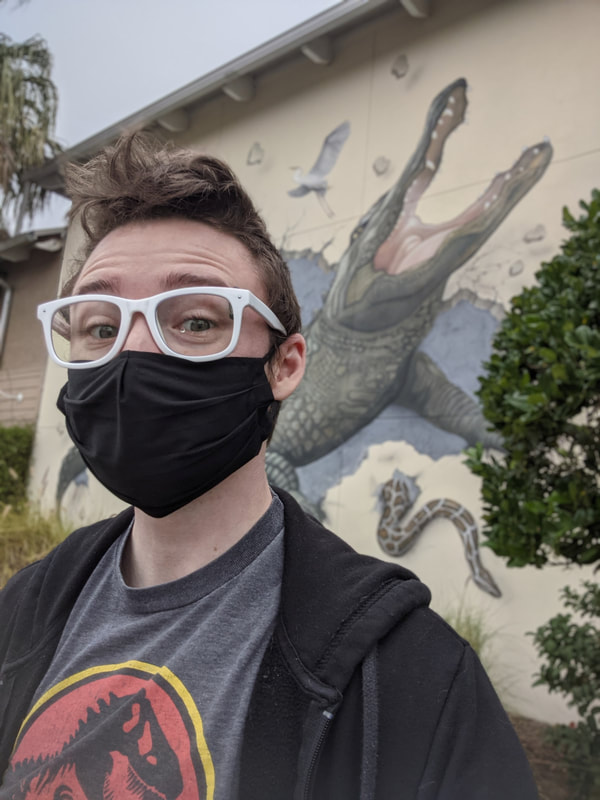Research staff
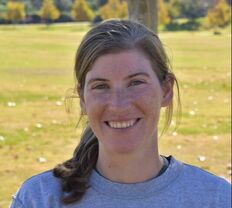
Dr. Emily Naylor
Post-doctoral Researcher (2020 - 2022)
Assistant Professor at James Madison University starting Fall 2022
B.S. in Biological Sciences, Ohio University (2013); certificate in Museum Studies (2015)
Ph.D. in Evolution, Ecology, & Organismal Biology, University of California, Riverside (2020)
Website: https://ernaylor.weebly.com
(Check out the above website for a CV and past awards, service, and more!)
I am broadly interested in the functional morphology, biomechanics, and evolution of animal movement. Continuing in the direction of my Ph.D. work on geckos, my research at GW will use live-animal experiments and collections-based methods to examine the ecological context under which locomotor phenotypes operate and evolve, but with respect to the tetrapod land invasion. Alongside my research, I am passionate about teaching and public outreach and look forward to continuing to grow as a communicator and ambassador of science.
Public outreach:
Post-doctoral Researcher (2020 - 2022)
Assistant Professor at James Madison University starting Fall 2022
B.S. in Biological Sciences, Ohio University (2013); certificate in Museum Studies (2015)
Ph.D. in Evolution, Ecology, & Organismal Biology, University of California, Riverside (2020)
Website: https://ernaylor.weebly.com
(Check out the above website for a CV and past awards, service, and more!)
I am broadly interested in the functional morphology, biomechanics, and evolution of animal movement. Continuing in the direction of my Ph.D. work on geckos, my research at GW will use live-animal experiments and collections-based methods to examine the ecological context under which locomotor phenotypes operate and evolve, but with respect to the tetrapod land invasion. Alongside my research, I am passionate about teaching and public outreach and look forward to continuing to grow as a communicator and ambassador of science.
Public outreach:
- Guest blogger, Anatomy To You, Raise a TOEst to geckos!": https://anatomytoyou.com/2020/12/20/in-focus-raise-a-toest-to-geckos/
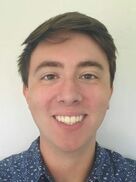
Zach Quigley
Lab technician (2020 - 2022)
B.A. in Integrative Biology, UC Berkeley (2018)
Twitter: @ZachQuigley_
ORCID: https://orcid.org/0000-0001-8239-3335
I am interested in investigating the functional morphology of organisms that push the bounds of organismal function, particularly in their methods of locomotion and feeding behavior. I am currently working as a post-baccalaureate lab technician/researcher using micro-CT analysis to investigate the functional limb morphology of amphibious organisms.
I previously interned in the Flight Lab at UC Berkeley under Dr. Alejandro Rico-Guevara, where I helped design, construct, and program an automated robotic feeder-mask device to collect metabolic data on a feeding hummingbird in flight.
Before that I interned in the Healy Lab at UC Berkeley under Dr. Amit J. Kha, where I helped formulate and manufacture an electrospun, hydrogel, human pluripotent stem cell scaffold using a novel hydrogel formulation. I also participated in confocal and SEM imaging of our scaffolding.
Presentations of lab research:
Training
Lab technician (2020 - 2022)
B.A. in Integrative Biology, UC Berkeley (2018)
Twitter: @ZachQuigley_
ORCID: https://orcid.org/0000-0001-8239-3335
I am interested in investigating the functional morphology of organisms that push the bounds of organismal function, particularly in their methods of locomotion and feeding behavior. I am currently working as a post-baccalaureate lab technician/researcher using micro-CT analysis to investigate the functional limb morphology of amphibious organisms.
I previously interned in the Flight Lab at UC Berkeley under Dr. Alejandro Rico-Guevara, where I helped design, construct, and program an automated robotic feeder-mask device to collect metabolic data on a feeding hummingbird in flight.
Before that I interned in the Healy Lab at UC Berkeley under Dr. Amit J. Kha, where I helped formulate and manufacture an electrospun, hydrogel, human pluripotent stem cell scaffold using a novel hydrogel formulation. I also participated in confocal and SEM imaging of our scaffolding.
Presentations of lab research:
- 2021. ZM Quigley, RW Blob, SM Kawano.
Kinematic comparisons between mudskipper fins and salamander limbs during terrestrial locomotion. Virtual national SICB meeting. January 3 - 7. Abstract is available HERE. - 2020. ZM Quigley, RW Blob, SM Kawano.
Kinematic comparisons between mudskipper fins and salamander limbs during terrestrial locomotion. Southeast regional SICB meeting. November 14.
Training
- 2020 University of Texas High-Resolution X-ray CT Facility (UTCT), Bio and Paleo Short Course (August 10 - 14)
Graduate students
|
Alec Baines
Ph.D. in Biological Sciences, George Washington University (2021-Present) B.S. in Integrative Animal Biology with minor in Geology, University of South Florida Twitter: @BainesAE Email: abaines<at>gwmail<dot>gwu<dot>edu I am interested in the evolutionary relationship between somatosenses, locomotion, and the ability to adopt new ecological niches. My PhD research focuses on this relationship across the evolutionary history of archosaurs and ways to utilize this knowledge to improve wildlife conservation efforts related to climate change. The wide range of locomotory and somatosensory capabilities in archosaurs as well as their extensive fossil record & extant species makes them an ideal group to study this relationship. I am also interested in utilizing digital visualization to increase the preservation of at-risk fossils and to improve field work methods in difficult terrain. |

Matt LeFauve
PhD candidate with Dr. Patricia Hernandez and an honorary member of the Fins and Limbs lab!
Ph.D. in Biological Sciences, George Washington University (2016-2021)
M.S. in Biology, American University (2016)
B.S. in Animal Behavior, Canisius College (2014)
Twitter: @mklefauve
Website: matthewklefauve.weebly.com
I am broadly interested in how organisms collect and process sensory information and how differences in their central nervous systems relate to differences in behavior and ecological niche habitation. My current research focuses on social behavior variation between species of hearing specialist fishes and neuroanatomical differences between invasive Asian carp species using live animal experiments, animal kinematics, CT scanning and segmentation, histology, and high-throughput tracking of animal behavior using deep-convoluted neural networks. My previous work has focused on behavioral toxicology in zebrafish and cognition and behavioral endocrinology in gorillas.
Presentations of lab research:
PhD candidate with Dr. Patricia Hernandez and an honorary member of the Fins and Limbs lab!
Ph.D. in Biological Sciences, George Washington University (2016-2021)
M.S. in Biology, American University (2016)
B.S. in Animal Behavior, Canisius College (2014)
Twitter: @mklefauve
Website: matthewklefauve.weebly.com
I am broadly interested in how organisms collect and process sensory information and how differences in their central nervous systems relate to differences in behavior and ecological niche habitation. My current research focuses on social behavior variation between species of hearing specialist fishes and neuroanatomical differences between invasive Asian carp species using live animal experiments, animal kinematics, CT scanning and segmentation, histology, and high-throughput tracking of animal behavior using deep-convoluted neural networks. My previous work has focused on behavioral toxicology in zebrafish and cognition and behavioral endocrinology in gorillas.
Presentations of lab research:
- 2021. MK LeFauve, SM Kawano, L Patricia Hernandez. Can you hear me now? Shoaling in a sensory-limited environment. Virtual national SICB meeting. January 3 - 7. Abstract is available HERE.
- 2020. MK LeFauve, L Patricia Hernandez, SM Kawano.
Shoaling with Sensory Limitations. Southeast regional SICB meeting. November 14. - 2020. MK LeFauve, SM Kawano, L Patricia Hernandez. Can you hear me now? Sensory requirements for shoaling behavior. Animal Behavior Society virtual meeting. July 28 - 31. Abstract is available HERE.
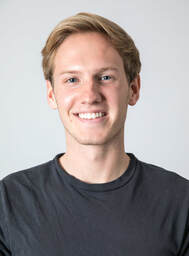
Kevin Travis
M.S. in Biology, Cal State Long Beach (2017 - 2020)
B.S. in Marine Biology, with a minor in Mathematics; University of Tampa (2017)
Twitter handle: @KevinGTravis
Email: Kevin<dot>Travis<at>student.csulb.edu
I am broadly interested in investigating the relationship between form and function in marine vertebrates, with an emphasis on fish feeding and locomotion. Previously, I led a collaborative study on the feeding biomechanics of an enigmatic deep-sea fish by applying comparative morphology and computational techniques (http://bit.ly/TravisSICB2017). For my Master’s thesis, I will be expanding my research to investigate the biomechanics of aquatic and terrestrial locomotion in the amphibious epaulette shark (Hemiscyllium ocellatum). The aim of this research is to determine how skeletal properties correlate with the locomotor mode in aquatic and amphibious fishes in order to evaluate the minimum requirements for moving on land. To accomplish this, I will be utilizing multi-disciplinary approaches in my research that integrates mathematical, engineering, and biomechanical techniques.
Honors and awards:
Professional service:
M.S. in Biology, Cal State Long Beach (2017 - 2020)
B.S. in Marine Biology, with a minor in Mathematics; University of Tampa (2017)
Twitter handle: @KevinGTravis
Email: Kevin<dot>Travis<at>student.csulb.edu
I am broadly interested in investigating the relationship between form and function in marine vertebrates, with an emphasis on fish feeding and locomotion. Previously, I led a collaborative study on the feeding biomechanics of an enigmatic deep-sea fish by applying comparative morphology and computational techniques (http://bit.ly/TravisSICB2017). For my Master’s thesis, I will be expanding my research to investigate the biomechanics of aquatic and terrestrial locomotion in the amphibious epaulette shark (Hemiscyllium ocellatum). The aim of this research is to determine how skeletal properties correlate with the locomotor mode in aquatic and amphibious fishes in order to evaluate the minimum requirements for moving on land. To accomplish this, I will be utilizing multi-disciplinary approaches in my research that integrates mathematical, engineering, and biomechanical techniques.
Honors and awards:
- 2018: Stephen and Ruth Wainwright Endowed Fellowship and Adopt-A-Student Endowed Fund, Friday Harbor Labs ($2,500)
- 2018: CSULB Biotechnology Scholarship ($1,500)
- 2018: Los Angeles Rod and Reel Club Graduate Research Scholarship ($2,500). Featured in the July 2018 Chum Line newsletter: http://bit.ly/ChumLine18.
- 2017 - 2018: Steckling Graduate Student Tuition Award.
- 2017: Best Graduate Student Talk at the Southwestern Organismal Biology meeting at Claremont Colleges. Featured in the Society for Integrative Biology Division of Vertebrate Morphology Fall newsletter! http://sicb.org/newsletters/nl11-2017/DVM.pdf
Professional service:
- 2018: Co-leader, "What can bones teach us about locomotion?" outreach event for AIMS Academy - David Starr Jordan High School; California State University, Long Beach.
- 2018: Volunteer; National Biomechanics Day outreach event for Lakewood High School; California State University, Long Beach.
- 2017: Volunteer, "How do animals move?" outreach event for Cerritos College; California State University, Long Beach.
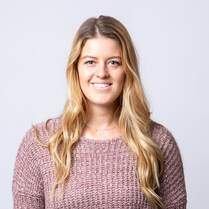
Caitlin Stapp
M.S. in Biology, Cal State Long Beach (2018 - present)
B.S. in Biology; Cal State Fullerton (2017)
Email: Caitlin<dot>Stapp<at>student.csulb.edu
I am really interested in applying biomechanics and physiology as tools to answer questions related to the form and function in different animals. As an undergraduate at CSUF, I led two independent research projects: one examining the material properties of armored fish scales and the other analyzing the sexual dimorphism of denticles on demersal and pelagic elasmobranch species. As a graduate student at CSULB, I aim to broaden my skill set and dive into the field of fish locomotion. Specifically, the main goal of my Master’s project is to explore the relationships between musculoskeletal anatomy and locomotor function of the walking batfish (Ogcocephalus cubifrons), a fish that performs aquatic substrate-based locomotion. I plan to integrate kinematic, kinetic, and mechanical property data to shed light on the functional similarities and differences between “walking” in fishes and tetrapods. My proposed work is interdisciplinary and combines practical techniques from biology, engineering, and materials science to help answer a fundamental question about animal physiology and locomotion: how does form contribute to function?
As of 9/1/19, Caitlin is a Master's student at Cal State Long Beach under the advisement of Ted Stankowich.
Professional service:
M.S. in Biology, Cal State Long Beach (2018 - present)
B.S. in Biology; Cal State Fullerton (2017)
Email: Caitlin<dot>Stapp<at>student.csulb.edu
I am really interested in applying biomechanics and physiology as tools to answer questions related to the form and function in different animals. As an undergraduate at CSUF, I led two independent research projects: one examining the material properties of armored fish scales and the other analyzing the sexual dimorphism of denticles on demersal and pelagic elasmobranch species. As a graduate student at CSULB, I aim to broaden my skill set and dive into the field of fish locomotion. Specifically, the main goal of my Master’s project is to explore the relationships between musculoskeletal anatomy and locomotor function of the walking batfish (Ogcocephalus cubifrons), a fish that performs aquatic substrate-based locomotion. I plan to integrate kinematic, kinetic, and mechanical property data to shed light on the functional similarities and differences between “walking” in fishes and tetrapods. My proposed work is interdisciplinary and combines practical techniques from biology, engineering, and materials science to help answer a fundamental question about animal physiology and locomotion: how does form contribute to function?
As of 9/1/19, Caitlin is a Master's student at Cal State Long Beach under the advisement of Ted Stankowich.
Professional service:
- 2018: Volunteer, "What can bones teach us about locomotion?" outreach event for AIMS Academy - David Starr Jordan High School; California State University, Long Beach.
Undergraduate students
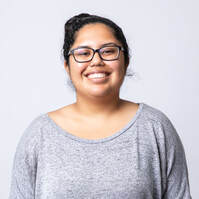
Jackie Macias
B.A. in Anthropology, with a minor in Forensic Studies, Cal State Long Beach (Anticipated graduation date: May 2021)
I am a sophomore anthropology student at CSULB, and I am in interested in studying morphology in both human and non-human animals, especially in relation to evolution. I am also passionate about studying the skeletal system in humans and applying that to the field of forensic science.
Professional service:
B.A. in Anthropology, with a minor in Forensic Studies, Cal State Long Beach (Anticipated graduation date: May 2021)
I am a sophomore anthropology student at CSULB, and I am in interested in studying morphology in both human and non-human animals, especially in relation to evolution. I am also passionate about studying the skeletal system in humans and applying that to the field of forensic science.
Professional service:
- 2018: Volunteer, "What can bones teach us about locomotion?" outreach event for AIMS Academy - David Starr Jordan High School; California State University, Long Beach.

Kevin Martinez
B.S. in Biology, Cal State Long Beach (2018)
I am a senior biology student at CSULB and I am passionate about animals and molecular biology. I am especially interested in conservation biology and how climate change and agricultural practices are affecting biodiversity.
Presentations of lab research:
Professional service:
B.S. in Biology, Cal State Long Beach (2018)
I am a senior biology student at CSULB and I am passionate about animals and molecular biology. I am especially interested in conservation biology and how climate change and agricultural practices are affecting biodiversity.
Presentations of lab research:
- 2018: K. Martinez and S.M. Kawano. Investigating the relationship between locomotion and cross-sectional bone geometry in aquatic and terrestrial salamanders. College of Natural Sciences and Mathematics Research Symposium. California State University, Long Beach. September 14, 2018. (Poster)
- 2018: K. Martinez and S.M. Kawano. How does bone shape relate to locomotion? Louis Stokes Alliance for Minority Participation and Bridges to the Baccalaureate Research Symposium. California State University, Long Beach. August 3, 2018. (Poster)
Professional service:
- 2018: Volunteer; National Biomechanics Day outreach event for Lakewood High School; California State University, Long Beach.
- 2017: Volunteer, "How do animals move?" outreach event for Cerritos College; California State University, Long Beach.

Dahlia Neri
B.S. in Biology, Cal State Long Beach (May 2019)
I am a senior biology student at CSULB and my passion for animal science drives me to study the structure, function, and growth of living organisms. More specifically, I am interested in studying the skeletal system of animals and understanding how body structure affects their function.
Professional service:
B.S. in Biology, Cal State Long Beach (May 2019)
I am a senior biology student at CSULB and my passion for animal science drives me to study the structure, function, and growth of living organisms. More specifically, I am interested in studying the skeletal system of animals and understanding how body structure affects their function.
Professional service:
- 2018: Volunteer, "What can bones teach us about locomotion?" outreach event for AIMS Academy - David Starr Jordan High School; California State University, Long Beach.
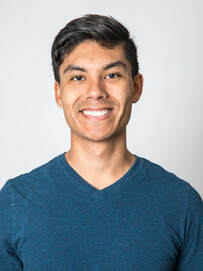
Miles Valencia
B.S. in Biology Education, Cal State Long Beach (2018)
A.A.’s in Natural Sciences, and Social and Behavioral Sciences, East Los Angeles College (2015)
Twitter handle: @MrMilesValencia
Email: Miles<dot>Valencia<at>student.csulb.edu
I am a post-baccalaureate student who is motivated to become a professor at a 4-year institution. I find ecomechanics intriguing and am interested in studying the relationship between form and function in musculoskeletal systems. I am particularly interested in addressing how locomotor performance is affected by muscle anatomy and physiology, and how these relationships change in different environments. My current research investigates the kinematic differences in salamander forelimbs by comparing how semi-aquatic adult Spanish ribbed newts (Pleurodeles waltl) and predominantly terrestrial adult tiger salamanders (Ambystoma tigrinum) overcome a similar challenge: terrestrial locomotion. By better understanding how different environments affect the musculoskeletal system, we can build more ecologically relevant models of animal movement.
As of 9/1/19, Miles is a Master's student at Cal State San Bernardino under the advisement of Angela Horner.
Presentations of lab research:
Award:
Professional service:
B.S. in Biology Education, Cal State Long Beach (2018)
A.A.’s in Natural Sciences, and Social and Behavioral Sciences, East Los Angeles College (2015)
Twitter handle: @MrMilesValencia
Email: Miles<dot>Valencia<at>student.csulb.edu
I am a post-baccalaureate student who is motivated to become a professor at a 4-year institution. I find ecomechanics intriguing and am interested in studying the relationship between form and function in musculoskeletal systems. I am particularly interested in addressing how locomotor performance is affected by muscle anatomy and physiology, and how these relationships change in different environments. My current research investigates the kinematic differences in salamander forelimbs by comparing how semi-aquatic adult Spanish ribbed newts (Pleurodeles waltl) and predominantly terrestrial adult tiger salamanders (Ambystoma tigrinum) overcome a similar challenge: terrestrial locomotion. By better understanding how different environments affect the musculoskeletal system, we can build more ecologically relevant models of animal movement.
As of 9/1/19, Miles is a Master's student at Cal State San Bernardino under the advisement of Angela Horner.
Presentations of lab research:
- 2019: M. Valencia and S.M. Kawano. Comparative kinematics of the forelimb during terrestrial locomotion in semi-aquatic versus terrestrial salamanders. Society for Integrative and Comparative Biology national meeting. Tampa, FL. January 6, 2019. (Poster). Link to abstract: http://vps40083.inmotionhosting.com/~sicb/meetings/2019/schedule/abstractdetails.php?id=1377
- 2018: M. Valencia and S.M. Kawano. Biomechanical comparisons of forelimb function in walking semi-aquatic and
terrestrial salamanders. Southwest Organismal Biology meeting. CSU San Marcos. November 10, 2018. (Poster).
Award:
- 2019 Society for Integrative and Comparative Biology Broadening Participation Travel Award ($500)
Professional service:
- 2018: Co-leader, "What can bones teach us about locomotion?" outreach event for AIMS Academy - David Starr Jordan High School; California State University, Long Beach.
- 2020: "Collecting reliable results in Comparative Animal Physiology"; Vernier Software and Technology: https://www.vernier.com/vernier-ideas/collecting-reliable-results-in-comparative-animal-physiology/
Photo credit for the portraits belong to Sean DuFrene / Photographer Marketing and Communications Long Beach State University. Copyright ©2017-2018, Long Beach State University, All Rights Reserved.
